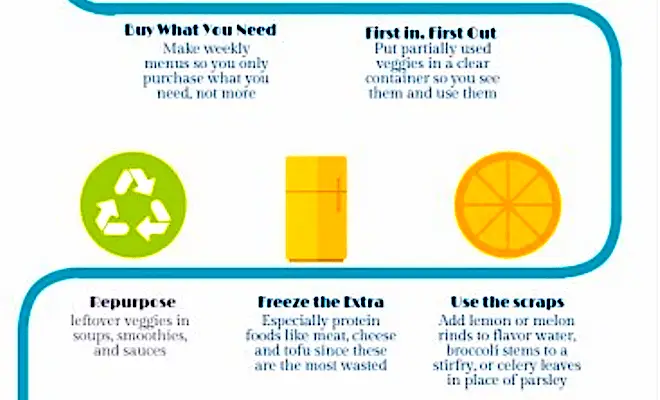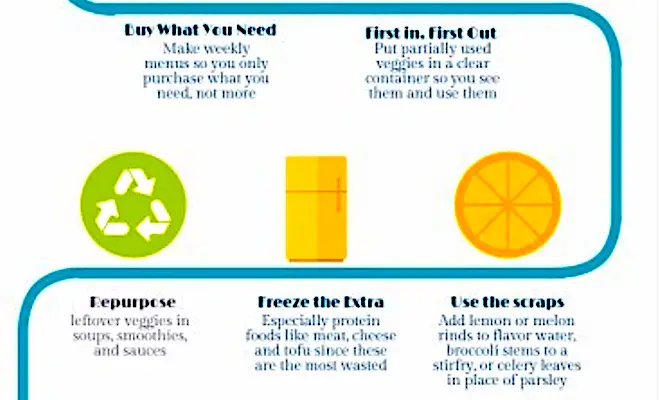Are you tired of seeing your kitchen waste bin filled to the brim every day? If so, you’ll be delighted to know that there are simple and effective ways to reduce waste in your kitchen without compromising on taste or convenience. From smart grocery shopping to creative meal planning, this article will provide you with ten practical tips to help you lead a more environmentally friendly and frugal lifestyle in the heart of your home. Say goodbye to food waste and excessive packaging with these easy-to-implement strategies for reducing waste in the kitchen.
Plan Your Meals
Create a Weekly Meal Plan
When it comes to reducing waste in the kitchen, one of the most effective strategies is to create a weekly meal plan. By taking the time to plan out your meals in advance, you can ensure that you only buy the ingredients you need and minimize the chances of food going to waste. Start by looking at your schedule for the week and determining how many meals you need to prepare. Then, make a list of the dishes you want to make and the ingredients required for each. This way, you can avoid buying unnecessary items and reduce the likelihood of leftovers being forgotten and wasted.
Make a Shopping List
Once your meal plan is in place, it’s time to make a shopping list. This will help you stay organized while shopping and ensure that you only buy what you need. Take a look at the recipes you’ll be making and write down all the ingredients you’ll require. Be sure to check your pantry and fridge to see what items you already have. By sticking to your shopping list, you can avoid impulse purchases and reduce unnecessary waste.
Check Your Pantry and Fridge Before Shopping
Before heading to the grocery store, it’s a good idea to take inventory of your pantry and fridge. This will help you avoid buying duplicate items and ensure that you use up ingredients that are close to expiration. By regularly checking what you already have, you can better plan your meals and make the most of the ingredients on hand. If you find any perishable items that need to be used up soon, consider incorporating them into your meal plan for the week.
Buy in Bulk
Purchase Staple Foods in Larger Quantities
Buying in bulk is not only a cost-saving measure but also an excellent way to reduce waste in the kitchen. When purchasing staple foods like grains, pasta, beans, or nuts, opt for larger quantities. This reduces the amount of packaging waste produced and ensures that you have enough of these essential items on hand. Plus, by buying in bulk, you can often get a better price per unit, saving you money in the long run.
Bring Your Own Containers to Reduce Packaging Waste
When shopping for bulk items, consider bringing your own containers rather than using plastic bags or disposable packaging provided by the store. By using reusable containers, such as jars or cloth bags, you can cut down on single-use plastic waste. Many stores now have zero-waste sections where customers can bring their own containers and fill them with the desired amount of food. Not only does this help reduce packaging waste, but it also allows you to have more control over the quantities you purchase, preventing food from going to waste.
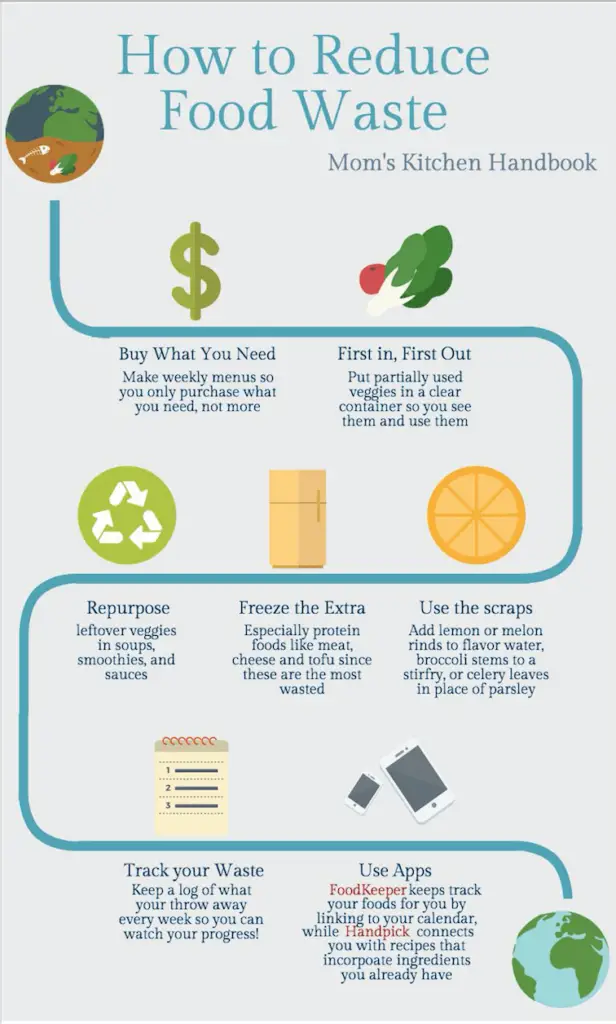
Use Leftovers
Reinvent Leftovers into New Dishes
Leftovers are a hidden gem when it comes to reducing waste in the kitchen. Rather than letting them sit in the fridge until they go bad, get creative and reinvent them into new dishes. For example, leftover roasted chicken can be transformed into a delicious chicken salad or used to top a homemade pizza. By repurposing leftovers, you not only save money but also minimize food waste. Get inspired by browsing recipes online that specifically cater to turning leftovers into tasty meals.
Freeze Excess Food for Future Meals
If you find yourself with more leftovers than you can consume within a few days, consider freezing them for future meals. Freezing excess food extends its shelf life and allows you to enjoy it at a later date. Make sure to store leftovers in airtight containers or freezer bags to maintain their flavor and prevent freezer burn. Don’t forget to label each item with the date and contents, so you can easily identify what’s in the freezer later on. This method is especially helpful for soups, stews, and casseroles that freeze well.
Preserve Food
Can or Jar Fruits and Vegetables
Preserving fruits and vegetables through canning or jarring is a great way to reduce waste and extend their shelf life. Whether you have an abundance of homegrown produce or found a great deal at the farmers’ market, preserving allows you to enjoy these items even when they’re out of season. Canned fruits and vegetables can be used in a variety of recipes, from pies to sauces. Look for simple canning recipes online or invest in a canning guidebook to learn the basics.
Use Pickling or Fermenting Methods
Pickling and fermenting are other preservation methods that not only help reduce waste but also add flavor to your meals. Pickling vegetables, such as cucumbers, carrots, or onions, in vinegar and spices creates tangy and crunchy delights. Fermenting vegetables, like cabbage for sauerkraut or kimchi, not only preserves them but also boosts their nutritional value by introducing beneficial bacteria. Experiment with different pickling and fermenting recipes to find your favorites and enjoy homemade preserved foods all year round.
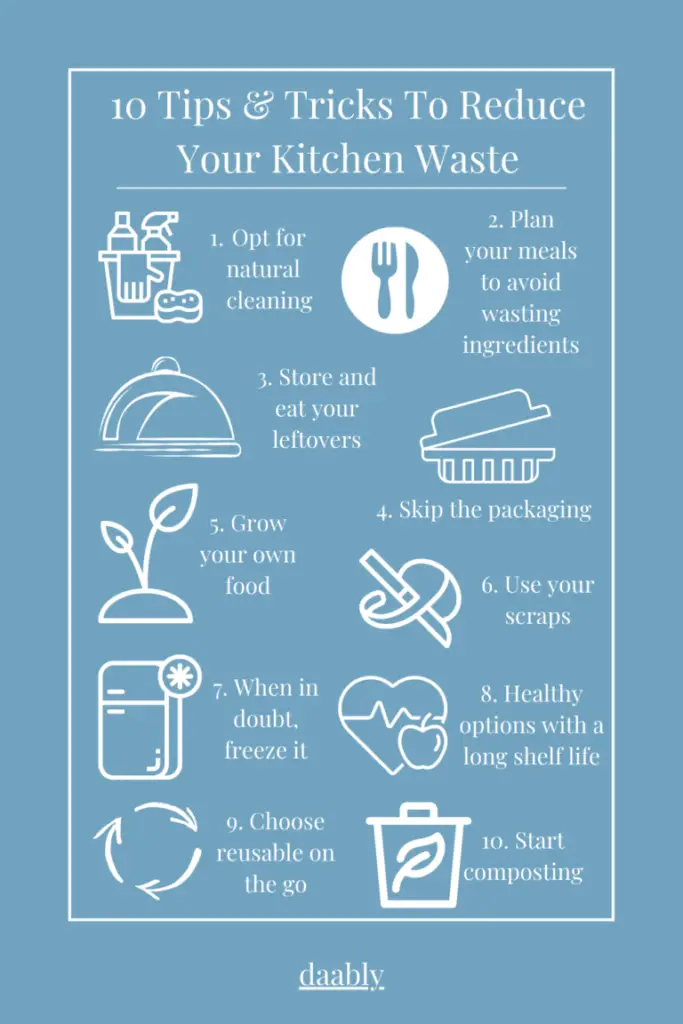
Compost Organic Waste
Set Up a Composting System or Bin
Composting is an eco-friendly way to dispose of organic waste and turn it into nutrient-rich soil. If you have a backyard, consider setting up a composting system or bin where you can collect food scraps and yard waste. Composting not only reduces the amount of waste that goes to the landfill but also provides a sustainable solution for enriching your garden soil. Research different composting methods, such as traditional composting or vermicomposting (using worms), to find the one that suits your needs.
Compost Fruit and Vegetable Scraps, Coffee Grounds, etc.
When composting, make sure to include fruit and vegetable scraps, coffee grounds, tea leaves, and other plant-based kitchen waste. These items are rich in nitrogen and essential nutrients that contribute to a healthy compost pile. Avoid adding meat, dairy, or oily residues, as they can attract pests or slow down the decomposition process. By composting organic waste, you not only reduce your environmental impact but also create a valuable resource for gardening.
Avoid Single-Use Products
Ditch Disposable Plates and Cutlery
When it comes to reducing waste, avoiding single-use products is key. Next time you host a gathering or picnic, opt for reusable plates, cups, and cutlery instead of disposable ones. If washing dishes after a party feels overwhelming, consider using compostable or biodegradable alternatives made from sustainable materials. By skipping the disposable options, you’re preventing unnecessary waste from ending up in landfills and oceans.
Use Reusable Shopping Bags and Food Storage Containers
Another way to cut down on waste is to use reusable shopping bags and food storage containers. Whenever you head to the grocery store or market, bring your own reusable bags instead of using plastic ones. This reduces the demand for single-use plastics and helps minimize litter and pollution. Similarly, using reusable food storage containers instead of disposable plastic wrap or bags keeps your leftovers fresh without creating unnecessary waste.
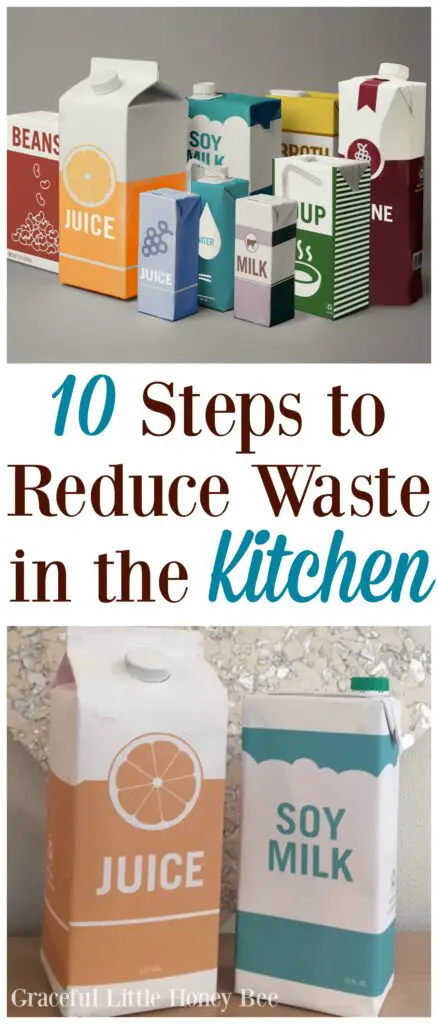
Reduce Food Packaging
Choose Products with Minimal Packaging
When shopping, try to choose products that come with minimal packaging. Opt for items with recyclable or biodegradable packaging materials whenever possible. Buying loose produce instead of pre-packaged ones is an excellent way to reduce plastic waste. Keep an eye out for bulk sections at your local grocery store, where you can find a wide range of items without excessive packaging. By making conscious choices about packaging, you’re taking a step towards a more sustainable and waste-free lifestyle.
Buy Fresh Produce without Plastic Wrapping
It’s no secret that plastic wrapping is a significant contributor to kitchen waste. Whenever you can, choose fresh produce that isn’t wrapped in plastic. Buying loose fruits and vegetables not only reduces waste but also allows you to select the precise quantity you need, reducing the chances of food going bad. Farmers’ markets are a fantastic place to find a variety of produce without excessive packaging. If plastic packaging is unavoidable, consider repurposing or recycling it whenever possible.
Eat Locally and Seasonally
Support Local Farmers and Reduce Transportation Emissions
Eating locally and seasonally is not only beneficial for your health but also for the environment. By supporting local farmers, you reduce the carbon footprint associated with transporting food long distances. Shopping at farmers’ markets or joining a community-supported agriculture (CSA) program are great ways to connect with local producers and enjoy fresh, locally-grown food. By choosing seasonal produce, you’re also enhancing the flavor and nutritional value of your meals.
Enjoy Foods in Their Peak Season
Foods are most flavorful and nutritious when enjoyed in their peak season. Strawberries in the summer, pumpkins in the fall, and citrus fruits in the winter are just a few examples. Embracing seasonal eating allows you to enjoy fruits and vegetables when they are abundantly available and at their best quality. Plus, seasonal produce often comes with lower price tags, making healthy eating more affordable. Get creative with recipes that highlight the flavors of seasonal ingredients and savor the taste of each season.
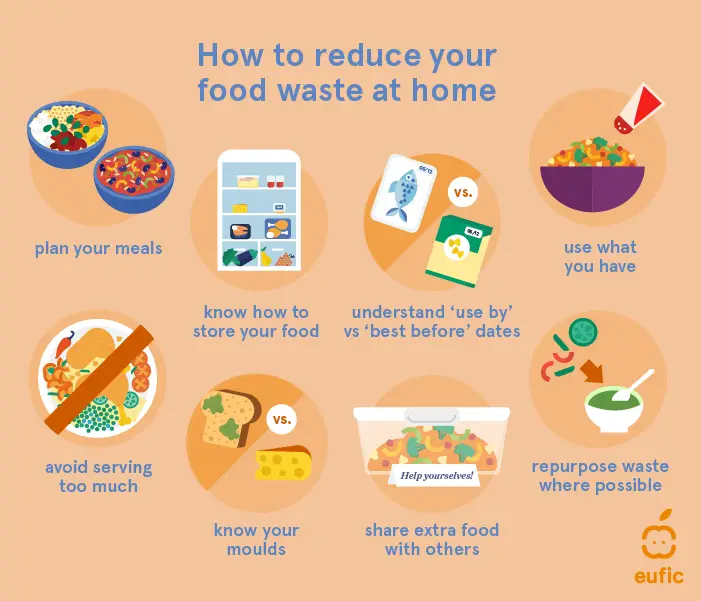
Properly Store Food
Keep Fruits and Vegetables Fresh for Longer
Proper storage techniques can significantly impact the shelf life of fruits and vegetables. Learn which produce should be stored in the fridge and which are best stored at room temperature. For example, berries and leafy greens fare better in the fridge, while root vegetables and tropical fruits are better off outside it. Additionally, storing fruits and vegetables separately can prevent them from ripening or spoiling prematurely. Taking the time to store your produce properly can help minimize waste and keep your ingredients fresh for longer.
Store Dry Goods in Airtight Containers to Prevent Spoilage
Dry goods like grains, pasta, and baking ingredients can easily go bad if not stored properly. To prevent spoilage and keep them fresh for longer, transfer these items to airtight containers. This not only preserves their quality but also prevents pests and moisture from affecting them. Labeling each container with the contents and expiration dates can help you stay organized and make sure you use them before they lose their freshness. Investing in a set of reusable glass or plastic containers is a worthwhile step towards reducing waste in your kitchen.
Avoid Food Waste
Use the First-In, First-Out (FIFO) Method
To prevent food from going to waste, it’s essential to use the first-in, first-out (FIFO) method. This means eating or using the oldest items first, ensuring that nothing gets forgotten or left to spoil. When unpacking groceries, place new items at the back of the pantry or fridge and move older items forward to get used first. Practicing FIFO eliminates the risk of ingredients expiring or going bad before they are consumed and keeps your kitchen organized.
Learn How to Properly Store Different Foods
Understanding how to store different types of food can go a long way in reducing waste. Some foods, like potatoes and onions, are best stored in a cool, dark place, while others, like tomatoes, should be stored at room temperature. Educate yourself on proper storage techniques for common items in your kitchen to ensure their longevity. With a little knowledge, you can keep your food fresh for longer and reduce the amount of spoiled food that ends up in the garbage.
Reducing waste in the kitchen is a goal that benefits both your wallet and the environment. By implementing these easy tips, such as planning your meals, buying in bulk, using leftovers, preserving food, composting organic waste, avoiding single-use products, reducing food packaging, eating locally and seasonally, properly storing food, and avoiding food waste, you can make a significant impact. Start incorporating these practices into your daily routine, and enjoy a more sustainable and eco-friendly kitchen.
